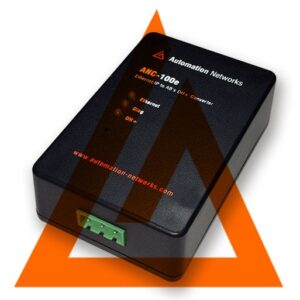Deploying an EtherNet/IP network can give food and beverage manufacturers flexibility, visibility and efficiency to boost production and meet changing demands.
By Gregory Wilcox, Global Business Development Manager, Rockwell Automation www.ab.com
Price fluctuations and changes in consumer tastes, developments in technology, and the implications of a global marketplace make it difficult but essential for food and beverage manufacturers to measure, monitor and review their processes regularly.
More enterprises are discovering that the plant-wide deployment of a single Ethernet/IP network technology helps them to optimize network performance and asset utilization — such as common toolsets (assets for design, deployment and troubleshooting) and skills/training (human assets).
A single system architecture using open, industry-standard networking technologies such as Ethernet and IP (Internet Protocol) delivers the flexibility, visibility and efficiency required to be efficient, cost-effective and competitive. A collaborative approach between business, engineering and IT professionals, suppliers and customers results in a network that makes the most of the technologies available and helps to meet changing market needs.
Here are the top 10 recommendations for deploying EtherNet/IP for food and beverage manufacturers:
- Understand a networked device’s application and functional requirements. These include data requirements such as communication patterns and traffic types (industrial and non-industrial).
- Enable a future-ready network design. Use industry and technology standards, reference models and reference architectures. Rockwell Automation and its Strategic Alliance Partner, Cisco®, can help to identify the most appropriate structure for your needs.
- Create structure within the plant-wide EtherNet/IP network with a logical topology. Define zones and segmentation, then place industrial automation and control system devices, servers or other communicating end-devices within the logical topology based on their location, function, availability and performance requirements.
- Segment the logical topology into modular building blocks. Create smaller Layer 2 networks to minimize broadcast domains. Use virtual local area networks (VLANs) within a zone to segment different traffic types, such as industrial and non-industrial. Minimize the number of devices to less than 200 within a zone and VLAN. Use firewalls to strongly segment the industrial and enterprise zones, creating an industrial demilitarized zone (IDMZ) that enables secure sharing of applications and data between the zones.
- Use managed industrial switches. These provide key network services such as loop prevention, resiliency, segmentation, prioritization, time synchronization, multicast management, security and diagnostics.
- Design and implement a robust physical layer reflecting availability and resiliency requirements. Ensure end devices and network infrastructure devices communicate at the best possible speed and duplex. Deploy physical cabling and EMI noise mitigation corresponding to plant conditions and requirements.
- Determine application and network security requirements. Establish early dialogue with IT, considering applicable IT requirements. Implement a holistic defense-in-depth security approach at multiple application layers using an industrial security policy that is unique from and in addition to the enterprise security policy.
- Reduce network latency and jitter by using standard network protocols. Protocols include time synchronization using IEEE 1588 precision time protocol (PTP), quality of service (QoS) for control data prioritization and Internet Group Management Protocol for multicast management.
- Increase control and information data availability. Implement a redundant path network topology such as a ring or redundant star. In addition, use a resiliency protocol to avoid Layer 2 loops while helping to ensure fast network convergence time. These considerations affect how quickly the network will recover from a disruption, which may result in application timeouts and system shutdowns.
- Deploy a hierarchical network model using Layer 3 switches. Layer 3 switches support inter-VLAN routing between cell/area (Layer 2 network) zones and plant-wide applications and servers. Layer 3 switch capabilities enable design recommendation 4. If the application requires industrialized Layer 3 switches, consider products such as the Allen-Bradley® Startrix 8300TM layer 3 modular managed switch




